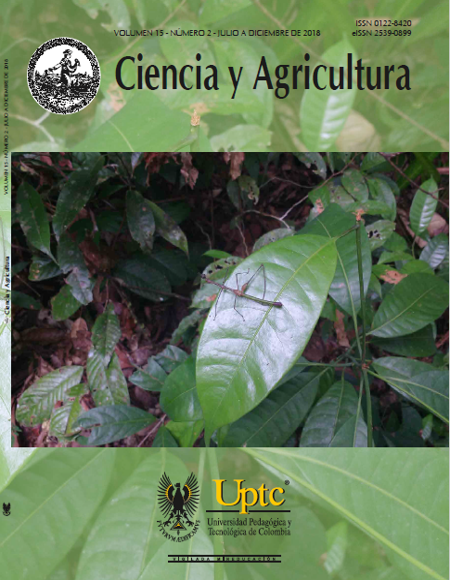Cambios morfológicos del cálamo de las plumas remeras en crecimiento de palomas

Resumen
Las plumas se han utilizado para estudiar procesos de diferenciación celular y morfogénesis. Existen pocos estudios histológicos en animales adultos que describan de manera secuencial la maduración de los componentes celulares durante el crecimiento; así que el objetivo de este trabajo fue describir las características histológicas de este proceso, abarcando los elementos celulares y sus relaciones anatómicas. Se obtuvieron plumas remeras de palomas, en las que se había inducido un proceso de regeneración, a los 8, 13, 18, 23 y 28 días de crecimiento. Se realizaron cortes histológicos teñidos con diferentes técnicas. Se demostró la presencia de la zona ramogénica, que tiende a disminuir de tamaño del día 8 al 28. En las crestas de la barba se observaron células de la barba, barbulares y de la placa axial, quedando cada cresta delimitada por la placa marginal. Las características celulares variaron de acuerdo con la región de las crestas, mostrando en la placa marginal transiciones de células escamosas a cuboides y nuevamente a escamosas, y, por otro lado, en la placa barbular de células cuboides a columnares y después a fusiformes. Se identificaron las células obscuras de la zona ramogénica, las cuales, por sus características tintoriales, parecen derivar de la papila dérmica. En conclusión, se realizó la caracterización histológica del cálamo y se describió, por primera vez, de manera secuencial en las diferentes etapas del crecimiento.
Palabras clave
crecimiento de la pluma, morfogénesis de la pluma, pluma, regeneración de la pluma
Citas
(1) Lin J., Luo J., Redies C. Differential regional expression of multiple ADAMs during feather bud formation. Developmental Dynamics. 2004; 231:741-749.
(2) Alibardi L. Cell junctions during morphogenesis of feathers: general ultrastructure with emphasis on adherens junctions. Acta Zoologica (Stockholm). 2011; 92: 89-100. DOI: https://doi.org/10.1111/j.1463-6395.2010.00454.x.
(3) Alibardi L. Ultraestructure of the feather follicle in relation to the formation of the rachis in pennaceous feathers. Anat Sci Int. 2010; 85: 79-91. DOI: https://doi.org/10.1007/s12565-009-0060-z.
(4) Chang CH., Yu M., Wu P., Jiang TX., Yu HS., Widelitz RB., et al. Sculpting skin appendages out of epidermal layers via temporally and spatially regulated apoptotic events. J Invest Dermatol. 2004; 122: 1348-1355. DOI: https://doi.org/10.1111/j.0022-202X.2004.22611.x.
(5) Lin SJ., Wideliz RB., Yue Z., Li A., Wu X. Feather regeneration as a model for organogenesis. Develop Growth Differentiation. 2013; 55: 139-148. DOI: https://doi.org/10.1111/dgd.12024.
(6) Gade NE., Pratheesh MD., Nath A., Dubey PK., Amarpal G., Sharma T. Therapeutic potential of stem cell in veterinary practice. Vet World. 2012; 5(8): 499-507. DOI: https://doi.org/10.5455/vetworld.2012.499-507.
(7) Yap KK. Modelling human development and disease: The role of animals, stem cells, and future perspectives. Australian Med Student J. 2012; 3(2): 8-10.
(8) Dawson A., Perrins CM., Sharp PJ., Wheeler D., Groves S. The involvement of prolactin in avian molt: the effects of gender and breeding success on the timing of molt in Mute swans (Cygnus olor). General Comparative Endocrinol. 2009; 161(2): 267-270. DOI: https://doi.org/10.1016/j.ygcen.2009.01.016.
(9) Gienapp P., Merilä JP. Genetic and environmental effects on a condition-dependent trait: feather growth in Siberian jays. J. Evol Biol. 2010; 23: 715-723. DOI: https://doi.org/10.1111/j.1420-9101.2010.01949.x.
(10) Prum RO., Dyck J. A hierarchical model of plumage: Morphology, development, and evolution. J Exp Zool (Mol Dev Evol). 2003; 298B: 73-90. DOI: https://doi.org/10.1002/jez.b.27.
(11) Alibardi L. Cell organization of barb ridges in regenerating feathers of the quail: implications of the elongation of barb ridges for the evolution and diversification of feathers. Acta Zoologica (Stockholm). 2007; 88: 101-117. DOI: https://doi.org/10.1111/j.1463-6395.2007.00257.x.
(12) Alibardi L. Cytological aspects of the differentiation of barb cells during the formation of the ramus of feathers. Int J Morphol. 2007; 25(1): 73-83. DOI: https://doi.org/10.4067/S0717-95022007000100010.
(13) Alibardi L. Cell structure of barb ridges in down feathers and juvenile wing feathers of the developing chick embryo: Barb ridge modification in relation to feather evolution. Ann Anat. 2006; 88: 303-318. DOI: https://doi.org/10.1016/j.aanat.2006.01.011.
(14) Estrada FE., Peralta ZL., Rivas MP. Manual de Técnicas Histológicas. A.G.T. 1982.
(15) Sawyer RH., Rogers L., Washington L., Glenn TC., Knapp LW. Evolutionary origin of the feather epidermis. Developmental Dynamics. 2005; 232: 256-267. DOI: https://doi.org/10.1002/dvdy.20291.
(16) Yue Z., Jiang TX., Widelitz RB., Chuong C. M. Wnt3a gradient converts radial to bilateral feather symmetry via topological arrangement of epithelia. PNAS. 2006; 103(4): 951-955. DOI: https://doi.org/10.1073/pnas.0506894103.
(17) Bragulla H., Hirschberg R. Horse hooves and bird feathers: Two model systems for studying the structure and development of highly adapted integumentary accessory organs the role of the dermo epidermal interface for the micro-architecture of complex epidermal structures. J Exp Zool (Mol Dev Evol). 2003; 298B: 140-151. 61.
(18) Alibardi L. Wedge cells during regeneration of juvenile and adult feathers and their role in carving out the branching pattern of barbs. Ann Anat. 2007; 189: 234-242. DOI: https://doi.org/10.1016/j.aanat.2006.11.008.
(19) Van CS., Van DBW. Morphological and biochemical aspects of apoptosis, oncosis and necrosis. Anat Histol Embryol. 2002; 31: 214-223. DOI: https://doi.org/10.1046/j.1439-0264.2002.00398.x.
